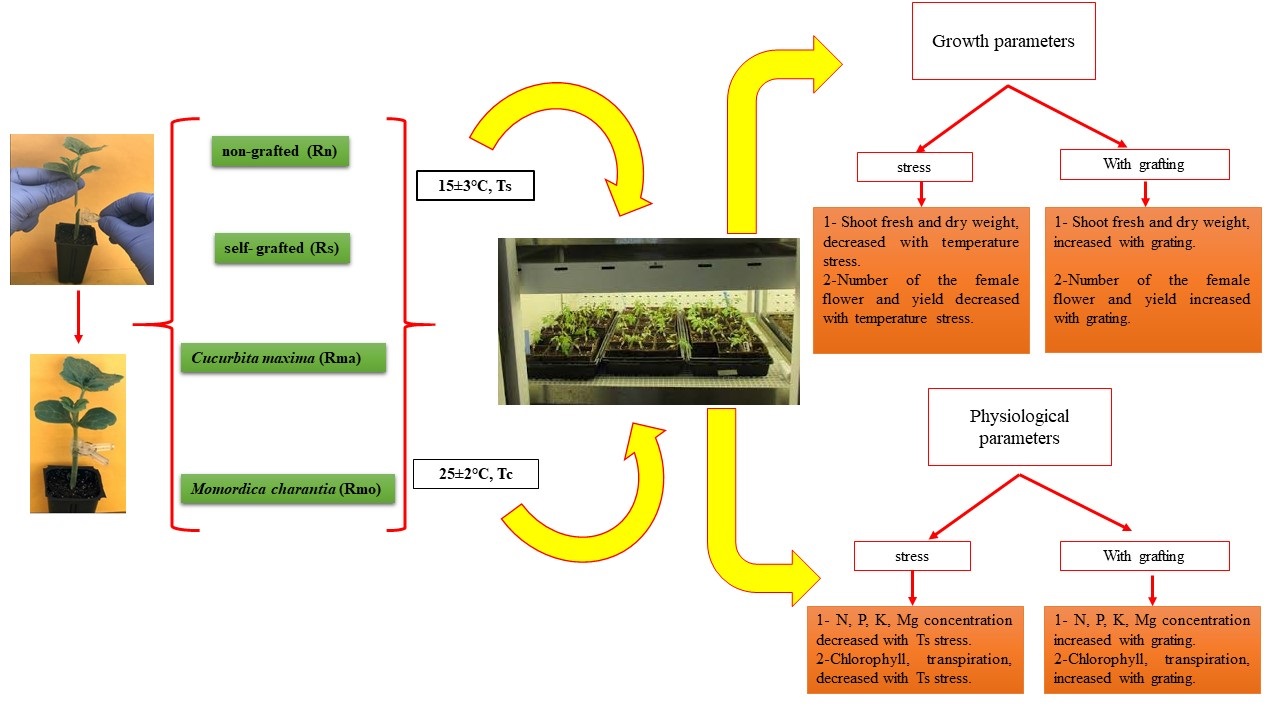'Momordica charantia’ introducing a new rootstock for grafted cucumber under low-temperature stress

Published 2021-03-09
Keywords
- Cucurbita maxima,
- female flower,
- Karela,
- photosynthesis,
- rootstock
- yield ...More
How to Cite
Copyright (c) 2021 Saber Mohammadnia, Maryam Haghighi

This work is licensed under a Creative Commons Attribution 4.0 International License.
Abstract
Cucumber is a sensitive vegetable to low temperatures. Grafting vegetables on different rootstocks can decrease the harmful effects of environmental stresses, including low-temperature stress. An experiment was performed to evaluate grafting cucumbers on different rootstocks at low temperatures. Cucumber growth and yield and photosynthesis traits were examined. Treatments were the optimum temperature (25±2°C), and cold temperature (15±3°C, Ts), and rootstocks, were Momordica charantia (Rmo), Cucurbita maxima (Rma), non-grafted (Rn) and self- grafted (Rs) with 4 replications. Shoot fresh and dry weight, chlorophyll, RWC, transpiration, decreased with temperature stress. The number of female flowers, electrolyte leakage, photosynthesis, stomatal conductance increased with Ts. First fruit emergence per plant, N, P, K, Mg concentration decreased with Ts stress. Transpiration, female flower, RWC, and stomata conductance, N, P, K, Ca, and phenol increased in Rma and Rmo. Mg was at the highest concentration in Rma and Na in Rn. All in all, using Rmo as well as Rma is recommended for rootstock as it causes more reproductive growth.




